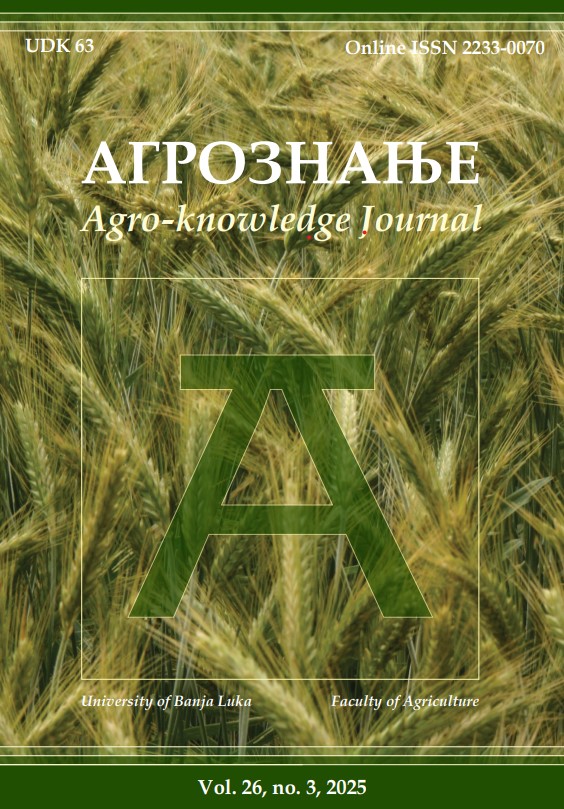Mitochondrial DNA analysis and phylogenetic tree construction of maternal lines in the Lipizzan horses
DOI:
https://doi.org/10.7251/AGREN2503173VAbstract
The Lipizzan horse breed comprises 62 mare family lines. Mitochondrial DNA (mtDNA), especially the D-loop region, plays a vital role in tracing maternal lineage and studying the origin of these family lines. The primary aim of this study is to construct phylogenetic trees using the Neighbour-Joining and Median-Joining methods, thereby analysing the genetic diversity and evolutionary relationships among these mare family lines. This study included 13 horses from Serbia that belong to different mare family lines including Thais (Rebecca-Thais) (n=2), Drava-Dubovina (Djebrin) (n=2), Wera (Theodorosta) (n=4), Batosta (Africa) (n=3), and Zora (n=2). The D-loop region was sequenced, and the sequences were subjected to bioinformatics analyses. Multiple alignments of all obtained sequences and those downloaded from the GenBank were performed with the reference mtDNA sequence downloaded from the GenBank using the MEGA 11 software, and phylogenetic trees were constructed using the PopART 1.7 and iTOL v6 online tools for visualization. Results of this study indicate that the Zora family line, though not officially recognized as a Lipizzan mare family line by the LIF (Lipizzan International Federation), forms a cluster with classical Lipizzan mare lines, including Monteaura, Betalka, Wera, and Allegra. The Neighbour-Joining tree provided a hierarchical representation of genetic distances, while the Median-Joining network revealed multiple evolutionary pathways, illustrating intraspecific genetic variability.

